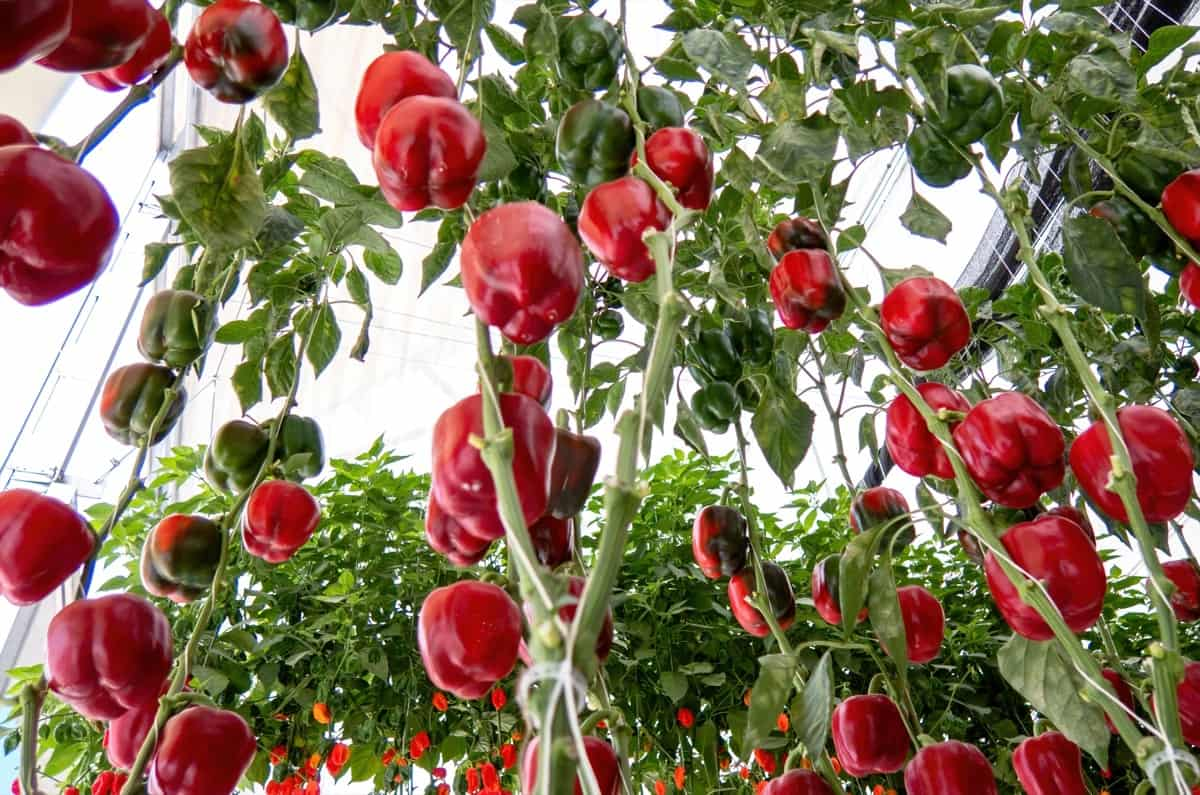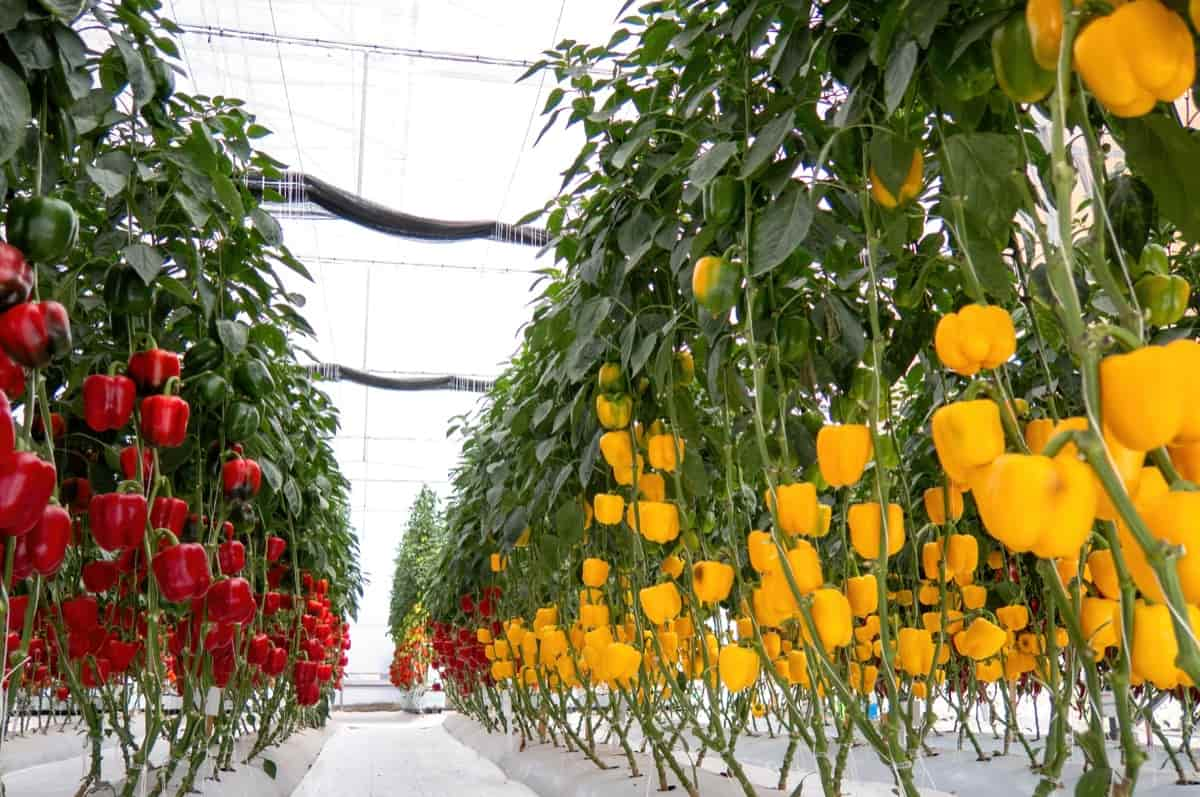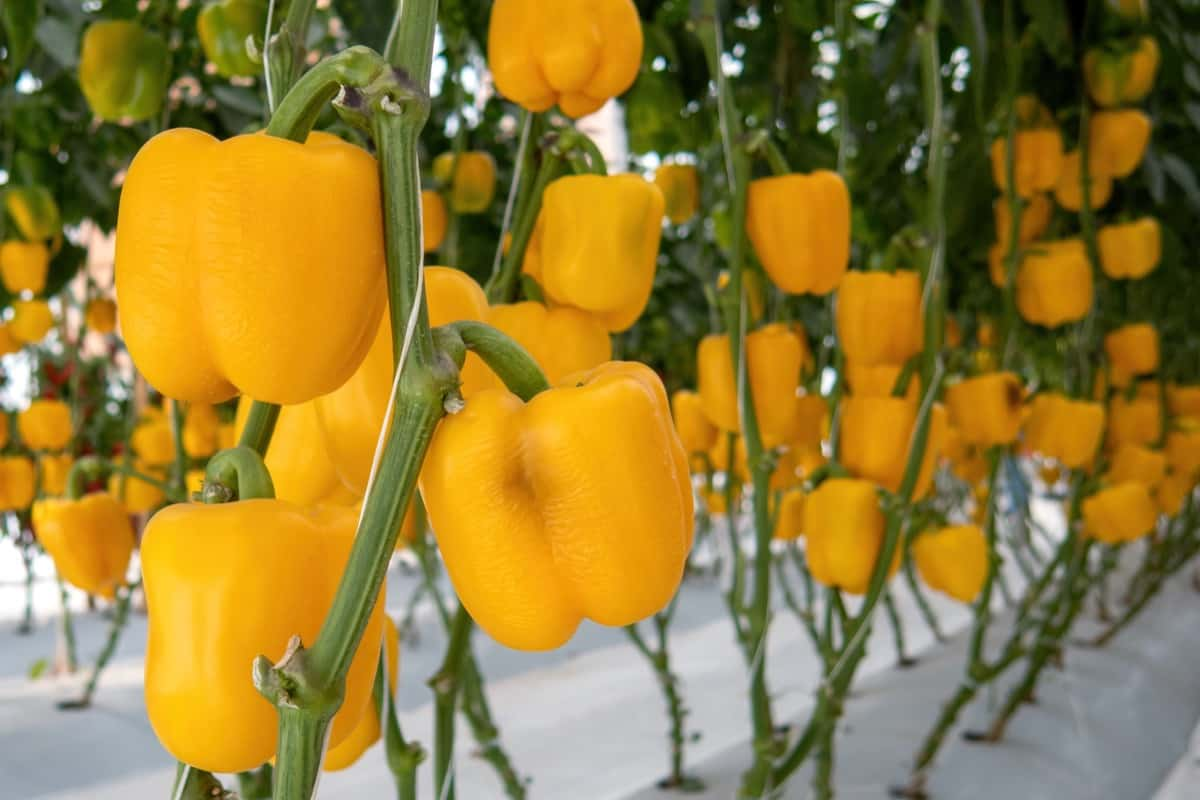One of the biggest advantages of greenhouse gardening is the ability to grow heat-loving plants. You might have trouble growing capsicum plants outdoors if you live in an area with a short growing season or notoriously cold spring nights. In almost any climate, you can successfully grow capsicum in a greenhouse. A greenhouse’s key to growing capsicum is providing light, heat, space, nutrients, and water.

You will be able to enjoy plenty of delicious fruits if your capsicum plants receive an adequate supply of all these nutrients (and not too much). Growing capsicum in a greenhouse will satisfy everyone’s desire for fresh capsicum from the garden, whether mild and sweet or spicy and hot. You will find everything you need to know about growing a tasty batch of capsicum in this article.
How to Grow Coloured Capsicum/Bell Peppers in Greenhouse
Soil Texture Required for Capsicum Cultivation in Greenhouse
The selection of soil is an important decision. Soil selection for capsicum cultivation following points should be considered:
- It is recommended that the pH of the soil be in the range of 6.0 to 6.5
- When you choose the site, you should analyze the soil to determine the salinity level, which shouldn’t exceed 1 ms/cm.
- Ensure the soil is highly porous and well-drained to improve root growth and penetration.
Lighting Required for Capsicum Cultivation in Greenhouse
For your capsicum plants to thrive, they need consistent light throughout their lives. In your greenhouse, choose a location that receives at least six hours of direct sunlight each day. If your plants aren’t receiving enough natural light, you can supplement them with artificial grow lights.
Temperature Required for Capsicum Cultivation in Greenhouse
As capsicums love heat, you should ensure your plants are grown in a warm greenhouse. A daytime temperature of at least 18.5°C to 21°C and a nighttime temperature of 15.5°C to 18.5°C is ideal for growing capsicum plants. Keep your greenhouse at these temperatures, especially if your climate is cooler.
Nursery Raising of Capsicum Seedlings
It is necessary to plant seeds of high quality to produce better seedlings. Seedlings are raised in pro-trays with 98 cells or cavities. One acre requires 16,000 to 20,000 seedlings, requiring 160-200 grams of seeds. Using the pro-trays, sterilized cocopeat is filled with seeds, one seed per cell, at a depth of 12 cm, and then covered with the same medium. Seed trays are staked one above the other and covered with plastic sheets until they germinate. After sowing, seeds germinate within a week. Water the trays lightly after transferring them to the greenhouse.
In case you missed it: Can you Grow Peppers from Store-bought Peppers: Step-by-Step Process

Transplanting Capsicum Seedlings
Before transplanting, the planting beds are watered to field capacity. Seedlings are transplanted when they are 30-35 days old. When removing seedlings from individual cells of portray, it is important not to damage the roots. Approximately 5 cm deep holes are made in polyethylene mulch film for transplanting seedlings. Copper oxychloride, copper captan, or 2 grams/liter copper hydroxide solution are soaked at the base of seedlings after transplantation at 25-30 ml per plant after transplanting. Using a hose pipe to water the mulched beds daily during the afternoon for a week will prevent mortality caused by heat trapped by the mulch sheet.
Irrigation Requirements for Growing Capsicum in Greenhouse
- Irrigation should begin immediately after plantation, followed by drip irrigation after a few days to ensure uniform root development.
- In most cases, a dripper is required for each plant. Drip irrigation provides 2-4 liters of water per square meter, depending on the season. A fogger can keep the air humid during the summer.
- Check the soil moisture content and inspect the soil column for irrigation. Decide how much irrigation is needed after this.
- During the summer, use the shower repeatedly to apply water to the edges of the bed to reduce evaporator loss. A water outlet (1-inch diameter pipe) should be provided inside the greenhouse.
- You can use water for irrigation and sprinkling after adding the acid to your water tank to reduce pH.
Fertigation for Capsicum Growing in Greenhouse
- Fertigation is applied after three weeks of vegetation phase N: P: K: 1: 1: 1 (e.g., 19: 19: 19) at 0.4 grams. During the vegetation phase, preferably for every 45-60 alternate days for better leaves
- The following alternate day EC after 60 days should be done at 0.4 grams / 2.2 ms/cm to produce more flowers and better fruit quality.
- For optimal results, fertilize and yield frequently in small amounts. Keep in mind, however, that crop requirements must always be met.
- A daily or weekly dose of micronutrients (combination II, Microscope B, Rexolin, Sequel, and Mahabrexil) should be given based on the symptoms.
- Add organic manure with an EC of less than 2 ms/cm every three months to maintain a proper ratio of C: N.
- Each two to three months, measure the soil’s expansion to determine which plants are growing.
Pruning Practices Followed in Capsicum Growing in Greenhouse
Plants of the capsicum family are cut so that four stems remain. Five or six nodes of the plant’s tip are divided into two and left to grow. Again, these two branches have grown into two branches. Each node’s tip has one strong branch and one weak branch. The plant is pruned every 8 to 10 days after 30 days, resulting in bigger fruits with better quality and higher productivity. You can also harvest capsicum plants for two stems and maintain the same yield level.
Harvesting Your Ripe Bell Peppers
Harvesting capsicums is best done in the early morning hours. Red capsicum can be harvested after 80-90 days, yellow capsicum at 70-75 days, and green capsicum at 55-60 days after transplanting. You can harvest the fruit once every three to four days. When yellow and red fruits have developed 50-80 percent of their color, they can be harvested. Fruits should be stored in a cool place after harvest, away from direct sunlight.
It is easy and fast to harvest peppers. When the peppers reach the desired color/maturity, harvest them. Cut the stem away from the plant using scissors, pruners, or a sharp blade to avoid damaging the peppers’ fragile parts. After harvesting hot peppers, wear gloves or wash your hands with soap and water. Make sure you don’t rub your face or eyes to prevent burning.
In case you missed it: 1 Acre Chilli Farming Success Story: Check How This Farmer Became Rich with Green Hot Pepper Cultivation

Conclusion
Urban markets are in great demand for colored capsicums. Most of the demand comes from the hotel and catering industries. A traditional green capsicum crop yields 8-16 tons per acre in about 4-5 months, depending on the variety and season. Green and colored capsicums can be grown in greenhouses for about 7-10 months, yielding 36-40 tons per acre.
- Feed Your Flock for Less: Top 10 Tips to Save on Chicken Feed
- Ultimate Guide to Ossabaw Island Hog: Breeding, Raising, Diet, and Care
- Hatching Answers: The Top 10 Reasons Your Chickens Aren’t Laying Eggs
- Eggs and Economics: Breaking Down the Cost of Raising Backyard Chickens
- Defend Your Greens: Proven Methods to Keep Iguanas Out of Your Garden
- Ultimate Guide to Cinnamon Queen Chicken: A Comprehensive Guide for Beginners
- Ultimate Guide to California Tan Chicken: Breeding, Raising, Diet, Egg-Production and Care
- Ultimate Guide to Marsh Daisy Chicken: Breeding, Raising, Diet, and Care
- 10 Types of Chicken Farming Businesses You Can Start for Profits